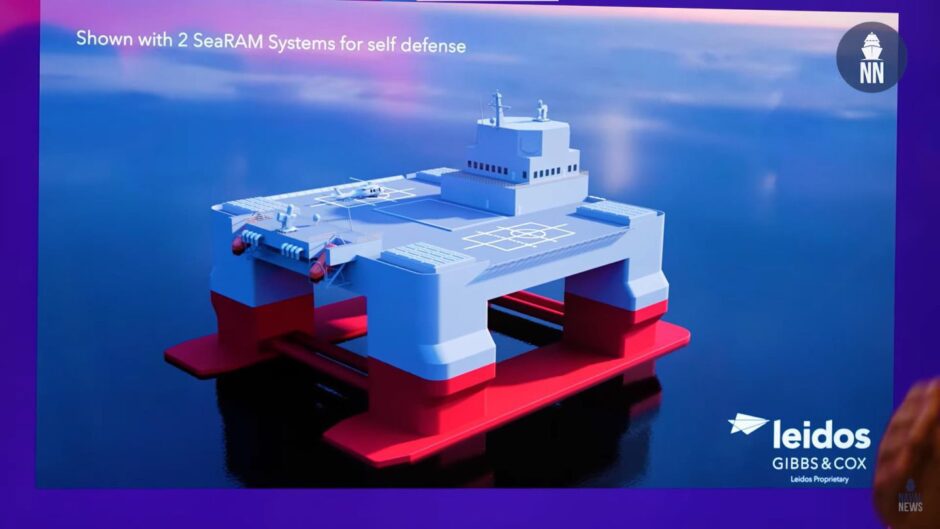
Naval architecture group Gibbs & Cox has floated a plan to convert old oil rigs into missile defence platforms and resupply bases.
The plan aims to address capacity issues facing the US Navy, providing ballistic missile defence and reloading for naval vessels and aircraft at sea.
The Mobile Defense/Depot Platform (MODEP) Concept created by Gibbs & Cox, a subsidiary of defence and aviation group Leidos, envisions developing a floating island from a repurposed rig, capable of independent operation for over 12 months.
In an interview with trade publication Naval News at the Sea Air Space 2024 trade show, Gibbs & Cox Solutions Architect & Combat Systems Department Manager Dave Zook stated: “Our target here is to find a solution to help the challenging problem of having capacity issues in the Western Pacific.
“For not enough cells, not enough missiles, not enough of being able to keep those ships in the forward station.”
Taking advantage of the rig’s size and stability in all kinds of weather, the company claims that one of its converted platforms could travel 5-9mph, covering up to 230 miles per day for 150 days.
The converted oil rigs could travel 4,600 miles without needing to refuel, with a capacity of a 2.3 million gallons of fuel.
In addition, the concept would come with maintenance and repair facilities for warships, the ability to carry 8,000 tonnes, and offer 6-20MW of additional power.
The platform would also use two cranes capable of lifting 100 tonnes for reloading operations, and would utilise existing oil and gas technology to refuel ships at sea.
The ballistic missile concept, according to Gibbs & Cox, could hold a maximum of 512 vertical launch system cells or 100 large missile launchers. The platform would take advantage of the rig’s height to provide an optimal surveillance position.
According to Gibbs & Cox, it has already identified up to six commercial US platforms that could be converted, and could be ready in around two years.

